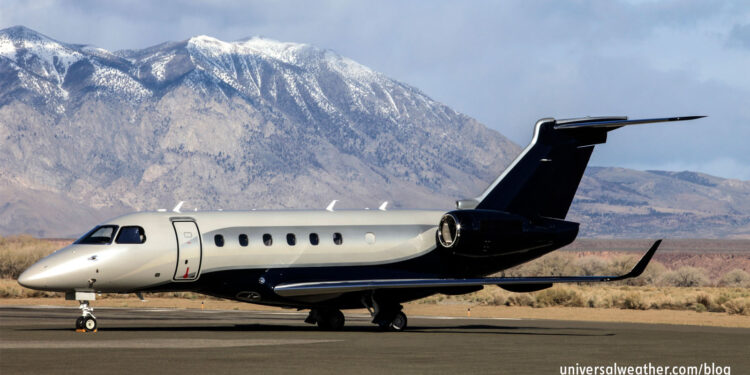6 Tips for Planning Aircraft Operations to Remote Locations

When operating a business aircraft to remote locations, begin your trip planning as far in advance as possible, talk with other operators who’ve been to the location, gather information on service availability, and always have backup plans in place in the event you experience unanticipated situations. If adequate ground handling support is not available at the remote destination, consider re-positioning a supervisory handling agent to coordinate and oversee the local handling process.
The following are trip planning tips to consider when operating to remote locations:
1. What are the top planning considerations when operating to a remote location?
There are a range of considerations to take into account. These include jet fuel availability and credit, airport details and restrictions, visa requirements and cabotage issues, Ground Support Equipment (GSE) availability, security on and off airport, commercial airline availability (in the event of Aircraft on Ground [AOG] issues or crew repositioning), Prior Permission Required (PPR)/airport slot, and permit requirements. Additional considerations are lead times, common weather issues, and hotel availability. Consider all these for both your primary and alternate airports.
2. What are common airport issues to consider?
Uncontrolled airfields may be a concern in terms of filing flight plans and obtaining services. Credit may be an issue when it comes to paying for jet fuel, government fees, and services. Some destinations, including Papeete (NTAA), require advance notification for jet fuel uplifts. Other airports – including secondary domestic airfields in China and Russia – may require that an approved navigator be onboard. Some locations – such as Kathmandu (VNKT) – mandate that the pilot in command have prior airport-specific training. Other airports do not permit general aviation access. Some airports have no lighting or limited runway lighting availability while others, including Easter Island (SCIP), restrict number of aircraft that can be en route at one time. It’s important to verify if a ground handler is available and, if so, during what hours and with what lead time requirements to make arrangements. It’s best to ensure that commercial airline availability exists at the remote destination in case parts or replacement crew must be brought in. Also check GSE availability and if the airport/ground handler has a suitable towbar for your aircraft type.
3. How about runway and aircraft parking considerations?
Particularly for remote or Pacific Island airfields, it’s important to consider runway condition. You may be dealing with particularly rough surfaces or a coral-surfaced runway, pot holes, and/or structures obstructing the runway. Migrating birds impact airport operations at such destinations as Majuro (PKMJ) or Midway Islands (PMDY) during certain seasons. Aircraft parking is restricted at certain airfields, and you may be limited in terms of length or stay. In some cases a drop and go might be the only option.
4. What about visa, customs/immigration, cultural, and cabotage issues?
Always confirm crew and passenger visa requirements in advance, and check if visas can be obtained on arrival. In some cases you may want to obtain visas for alternate destinations. Confirm customs/immigration availability as well as any particular or unique local requirements. You’ll also do well to review cultural considerations at the destination – in terms of what to wear and, perhaps, what not to say.
5. How about permit, PPR, and airport slot considerations?
It’s important to consider permits, permit lead times, and documentation requirements. Short-notice requests may be more complex at remote destinations, and this may have to do with communications with the remote location. Some locations – such as Ascension Island (FHAW) in the mid-Atlantic – can require weeks of advance planning, even for tech stops, as permission from both the UK and the U.S. military authorities is required. Be aware that multiple schedule changes can cause confusion, or operating denials, at certain locations.
6. Any local area issues that should be considered?
Always consider weather issues – fog, ice, snow, high winds, etc. – in advance. It’s also important to look into hotel accommodation and local transport options, as well as security on and off the airport. Your ground handler will be able to advise on airport fencing and patrols, safest means of ground transport, and what areas crews should avoid while in the local area. Private security may or may not be permitted airside to protect your aircraft. Provide your 3rd-party provider and ground handler with as much information as possible with regards to your schedule, service requirements, etc. To avoid potential credit issues, carry multiple consumer credit cards and backup cash (check on what types of currency are accepted), in addition to aviation fuel cards and fuel releases.
Closing thoughts
When things go wrong at remote locations, problems can have a way of being magnified. For example, AOG situations may ground your aircraft for several days – or longer – and you may face denial of entry or impoundment of aircraft if proper permissions have not been obtained in advance. Best practice is to plan early, use the resources of your 3rd-party provider and ground handler, and network with other flight crews who have firsthand insight for your intended remote destination.
Questions?
If you have questions about this article or require more information on planning a trip to a remote location, contact me at ericstanley@univ-wea.com.




